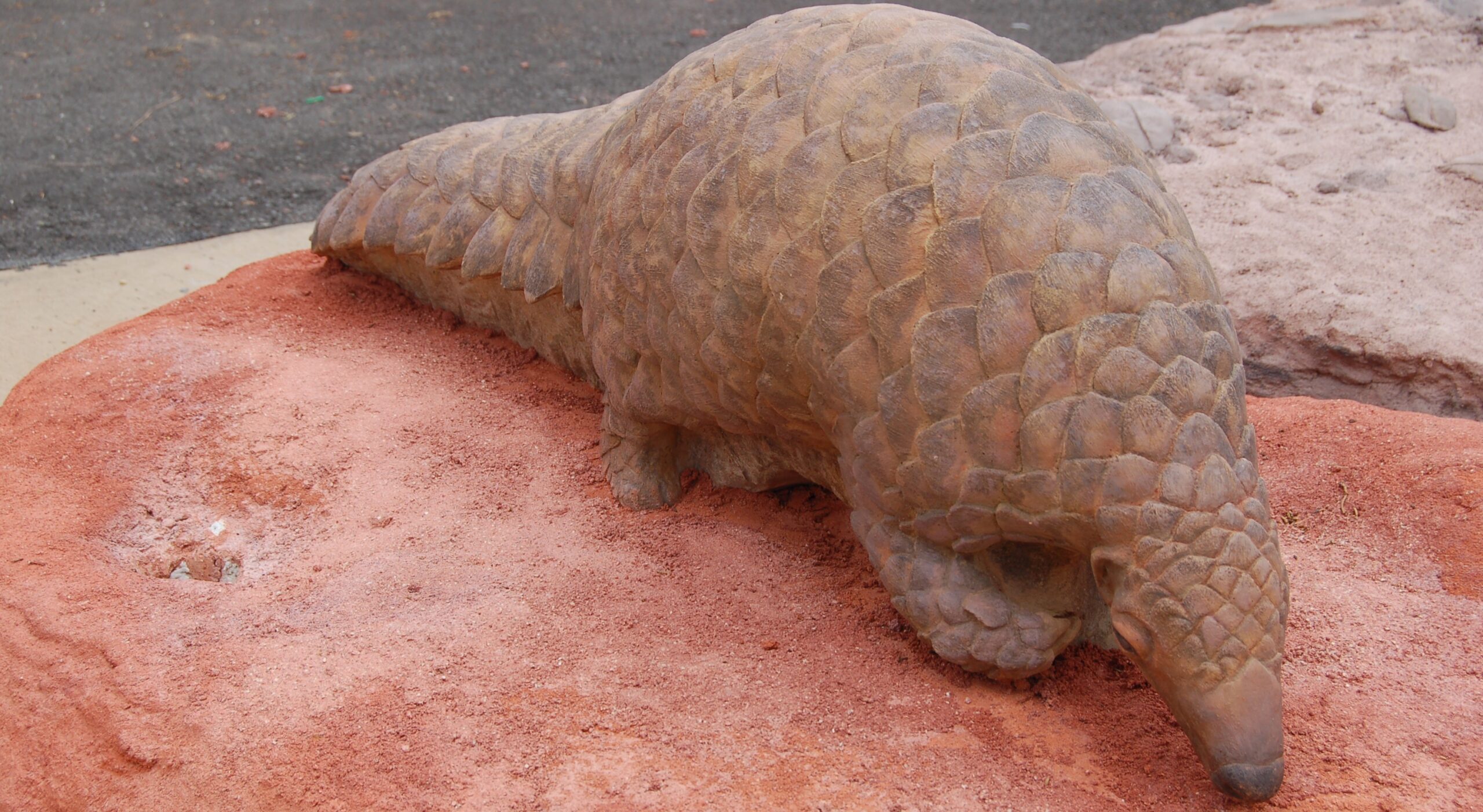Pangolin
Genus Manis

Fascinating Facts
- Their name is derived from the Malay word “pengguling,” which loosely translates to “something that rolls up”.
- Pangolin scales make up approximately 20% of their body weight.
- Some species have prehensile tails to help them climb trees.
- They can seal their ears and nostrils to keep bugs out while feeding, and have special muscles in their mouths to prevent escape.
- The biggest threat to pangolins is poaching for bushmeat.
- Pangopups travel with their mother, riding on the base of her tail.
- One adult pangolin can eat up to 70 million insects annually.
Habitat/Diet
Arboreal species find shelter in trees, while terrestrial species live in burrows. They are insectivores, feeding mainly on ants and termites with their extremely long tongue, which stretches out to be longer than their entire body.
Status in the Wild
Temminck’s ground, Giant ground, Black-bellied and White-bellied pangolins – Vulnerable, IUCN 2014
- Indian and Phillipine pangolins – Endangered, IUCN 2014
Sunda and Chinese pangolins – Critically Endangered, IUCN 2014
Range
Asia and sub-Saharan Africa
Location in the Zoo
Mammals Zone of the Sculpture Learning Plaza
